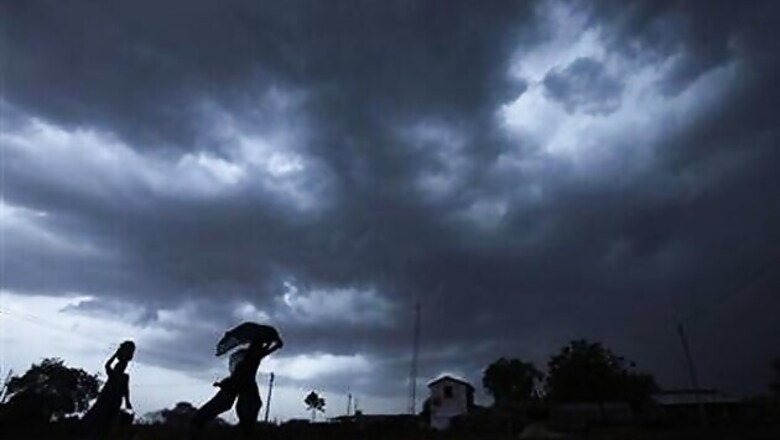
views
New Delhi: India is expected to receive less monsoon rains than predicted earlier, prompting the government to implement contingency plans to tackle the situation.
Noting that the weather office, in June, had predicted 96 per cent rains of the long period average with a model error of 14 per cent, a PMO statement said "this is now reportedly likely to be around the lower end of the range".
Gujarat, Haryana, Punjab and West Rajasthan are the worst-hit regions with monsoon deficiency ranging upto 75 per cent in Saurashtra and Kutch, the weather office data said.
Since the onset of monsoon, the country has received 22 per cent less rainfall than predicted with northwest region being the most affected with a deficieny of 42 per cent.
In Central India, rains have been 23 per cent deficient, while the southern peninsula has received 22 per cent less rains than average.
However, the government admitted that the 22 per cent deficit could be misleading given the uneveness of distribution and periodicity of rainfall.
The 84 major reservoirs in the country that are being monitored by the Central Water Commission have now begun to get filled but the current year storage is still 61 per cent of last year's storage.
A heartening note is that the water levels in reservoirs in Madhya Pradesh, Chhattisgarh and Rajasthan are more than the ten yearly averages.
As a result of deficient rainfall, there has been reduction of around eight million hectares in the crop area sown compared to last year.
"While the reduction in area sown in case of rice could be covered over time, area reduction in coarse cereals is likely to persist," the PMO statement said.
The steps taken by the government include making available high-yielding seed varieties to farmers, ensuring fodder availability for cattle and increased power supplies in some states to make use of ground water.
According to the India Meteorological Department (IMD) criteria, rainfall between 90-96 per cent of the long-term average is considered to be "below normal", while less than 90 per cent rains would classify to be a drought.




















Comments
0 comment